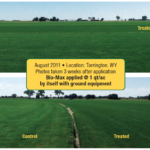Whether you are growing peas, edible dry beans, lentils or peanuts, a successful season starts with Science-Driven nutrition. Producing a high-yield crop with excellent pod fill, strong seed set, healthy roots and desirable seed size is a matter of well-informed decision making.
At Agro-K, we concentrate on the Five R’s: Growers achieve the best results when they use the Right nutrient applied at the Right time in the Right formulation in the Right mix targeting the Right place in the plant. Science-Driven nutrition offers growers the program and the tools to accurately and effectively address their crop’s specific needs, while minimizing product waste.
By taking an analytical approach, Agro-K focuses on measuring key metrics in order to deliver the most effective crop management programs and solutions. These Science-Driven tools help growers maximize their marketable yield and, consequently, their profits. Overall, the Five R’s help growers achieve consistent success and an elevated economic performance. Read on to learn more about the edible legumes crop grouping.





